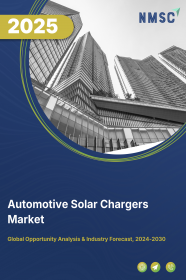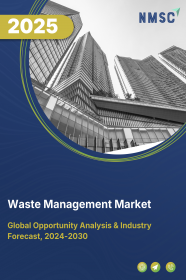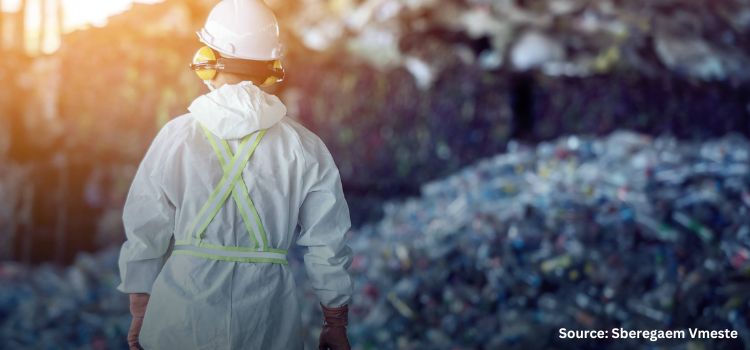
Bioplastic Recycling Market Report by Type (Biodegradable Bioplastics, & Non-Biodegradable Bioplastics), by Resin Type (Polylactic Acid (PLA), Polyethylene Terephthalate (PET), Polyhydroxyalkanoate (PHA), Starch-Based Bioplastics, & Cellulose-Based Bioplastics), by Recycling Process (Mechanical Recycling, Chemical Recycling, Others), and by End Users – Global Opportunity Analysis and Industry Forecast, 2025-2030
Bioplastic Recycling Market Overview
The global Bioplastic Recycling Market size was valued at USD 11.28 billion in 2024 and is predicted to reach USD 22.77 billion by 2030 with a CAGR of 12.4% from 2025 to 2030. The market is primarily driven by rising consumer demand for sustainable packaging, supportive government regulations promoting a circular economy, and the growing need for specialized recycling systems tailored to bioplastics.
However, high processing costs associated with bioplastic recycling, especially in cost-sensitive regions, remain a significant restraint limiting wider adoption and market growth. On the other hand, advancements in chemical and enzymatic recycling technologies present strong opportunities for industry players to expand capacity, fostering a more sustainable and circular bioplastics economy.
Rising Consumer Demand for Sustainable Packaging Fuels the Market Growth
The increasing consumer demand for sustainable packaging is a significant driving force behind the bioplastic recycling market growth. People are becoming more environmentally conscious and are actively seeking out products with eco-friendly packaging. This rising awareness is pushing brands to adopt bioplastics as a more sustainable alternative to conventional plastics.
Consequently, the need for effective end-of-life solutions for these bioplastics, such as recycling, is also escalating. This demand creates a strong incentive for the development and scaling of biobased plastic recycling technologies and infrastructure, contributing to the overall size and growth potential of the industry. The bioplastic packaging market, in particular, is seeing trends towards more sustainable solutions, driven by this consumer preference.
Supportive Government Regulations Drives the Market Demand
Government regulations and policies aimed at promoting a circular economy and reducing plastic waste are acting as a powerful driver for the bioplastic recycling market demand. Many regions are implementing stricter regulations on single-use plastics and setting targets for recycling and the use of sustainable materials. These regulatory pressures are compelling businesses to explore alternatives like bioplastics and to ensure that there are viable recycling pathways for them.
Such policies not only encourage the adoption of bioplastics but also stimulate investment and innovation in biobased plastic recycling technologies to meet the mandated recycling rates and sustainability goals. This creates a favorable environment for the expansion of the biobased plastic recycling industry and enhances its market share within the broader waste management sector.
Need for Specialized Recycling Systems Boosts the Market Growth
The limitations of conventional plastic recycling infrastructure in effectively handling certain types of bioplastics serve as a key driver for the development of a dedicated bioplastic recycling industry.
Many bioplastics cannot be simply mixed with traditional plastics in the recycling process due to differences in their chemical composition, which contaminate the recycled plastic streams. This incompatibility necessitates the development of separate collection, sorting, and recycling systems specifically designed for bioplastics.
This inherent challenge underscores the urgent need for innovative biobased plastic recycling technologies, such as chemical and enzymatic recycling, and specialized facilities to effectively manage the end-of-life of these bio-based materials. This push for tailored solutions is a significant factor contributing to the growth potential and increasing industry size of the biobased plastic recycling industry.
High Processing Costs Limit the Market Growth
High processing costs remain a major restraint for the bioplastic recycling market expansion, as recycling bioplastics is more expensive than conventional plastics due to complex sorting and specialized technologies.
This cost barrier deters small and medium-sized enterprises (SMEs) from adopting bioplastic recycling, particularly in cost-sensitive markets like Asia-Pacific. These high costs challenge the market’s growth potential, slowing the expansion of market share and limiting the industry size’s short-term growth trajectory.
Innovation in Recycling Methods Creates New Opportunities
A significant opportunity for industry players in the bioplastic recycling market share lies in investing in and developing advanced recycling technologies. Methods like chemical recycling and enzymatic degradation offer promising solutions for breaking down complex bioplastic structures into their constituent monomers, which then be used to produce new plastics or other valuable chemicals. These innovative technologies have the potential to handle a wider range of bioplastics, including those that are not easily mechanically recycled, and contribute to a truly circular economy for bio-based polymers.
Early investment and advancements in these areas provide a competitive edge and help establish a robust and sustainable biobased plastic recycling industry with significant growth potential. Research in this area is continuously revealing new enzymes capable of breaking down single-use bioplastics. Collaborative projects like REBIOCOVER and ReBioCycle are also focused on developing novel recycling and upcycling solutions for bioplastics across Europe.
For instance, in August 2024, Honeywell and Hinergy launched an advanced plastic recycling program focusing on bioplastics and other plastics, utilizing Honeywell's UpCycle Process Technology to convert waste into high-quality recycled polymer feedstock. This initiative aims to enhance sustainability by processing difficult-to-recycle materials, supporting a circular economy for bioplastics.
Market Segmentations and Scope of the Study
The bioplastic recycling market report is segmented based on type, resin type, recycling process, and end user. By type, the market is divided into biodegradable bioplastics and non-biodegradable bioplastics. By resin type, the market is categorized into polylactic acid (PLA), polyethylene terephthalate (PET), polyhydroxyalkanoate (PHA), starch-based bioplastics, and cellulose-based bioplastics. Based on the recycling process, the market is classified into mechanical recycling, chemical recycling, and others. Furthermore, by end user, the market is segmented into residential, commercial, and industrial (packaging, construction, automotive, textile, agriculture, medical & healthcare, and others). Regional breakdown and analysis of each of the aforesaid segments include regions comprising North America, Europe, Asia-Pacific, and RoW.
Geographical Analysis
Europe appears to be at the forefront of bioplastic recycling innovation, with initiatives like the EU-funded MOEBIOUS project tackling recycling hurdles and the ReBioCycle project focusing on novel recycling and upcycling solutions across the continent. Belgium is highlighted as a global leader in plastic recycling innovation, which likely includes advancements in biobased plastic recycling as well.
Furthermore, European Bioplastics has launched a webinar series specifically on bioplastics recycling, indicating a strong focus on knowledge sharing and development in this area. In North America, there is growing awareness and technological development in bioplastic recycling, driven by increasing consumer demand for sustainable packaging. The Asia-Pacific region is also witnessing increasing interest in bioplastics, and as their adoption grows, so will the need for robust recycling infrastructure.
The Rest of the World, including Latin America and the Middle East, accounts for 13% of the market, showing emerging growth potential through projects like Brazil’s bioplastic recycling pilots, though limited infrastructure hampers progress. These regional market trends highlight Europe’s dominance, Asia-Pacific’s rapid expansion, and untapped opportunities elsewhere, shaping the industry size’s trajectory.
Strategic Innovations by Key Players Propels the Market Growth
The key players in the global bioplastic recycling industry, such as NatureWorks LLC, TotalEnergies Corbion, and SK Chemicals, are adopting innovative strategies to bolster market share and address sustainability demands.
Recent developments include TotalEnergies Corbion’s January 2025 expansion of its Luminy PLA recycling facility in Thailand, enhancing chemical recycling capacity by 20% to process post-consumer PLA waste.
SK Chemicals launched its Recycle Innovation Center (RIC) in Ulsan, South Korea, in March 2025, focusing on recycling complex bioplastics like multi-layer films, aiming to increase recycled material availability. NatureWorks partnered with the ReBioCycle project in 2024 to develop enzymatic recycling for Ingeo PLA, achieving a 30% faster degradation rate. Challenges include insufficient recycling infrastructure, with only 10% of bioplastics processed correctly in Europe due to limited facilities, and high processing costs, 20–30% above conventional plastics.
Opportunities lie in scaling recycling hubs, as seen in Belgium’s ReBioCycle pilot processing 10,000 tons of PLA annually, and advancing technologies like plasma-assisted enzymatic recycling, which could expand the industry size by addressing diverse bioplastic types.
Key Benefits
-
The report provides quantitative analysis and estimations of the industry from 2025 to 2030, which assists in identifying the prevailing bioplastic recycling market opportunities.
-
The study comprises a deep dive analysis of the current and future bioplastic recycling market trends to depict prevalent investment pockets in the sector.
-
Information related to key drivers, restraints, and opportunities and their impact on the market is provided in the report.
-
Competitive analysis of the players, along with their market share is provided in the report.
-
SWOT analysis and Porters Five Forces model is elaborated in the study.
-
Value chain analysis in the market study provides a clear picture of roles of stakeholders.
Bioplastic Recycling Market Key Segments
By Type
-
Biodegradable Bioplastics
-
Non-Biodegradable Bioplastics
By Resin Type
-
Polylactic Acid (PLA)
-
Polyethylene Terephthalate (PET)
-
Polyhydroxyalkanoate (PHA)
-
Starch-Based Bioplastics
-
Cellulose-Based Bioplastics
By Recycling Process
-
Mechanical Recycling
-
Chemical Recycling
-
Others
By End User
-
Residential
-
Commercial
-
Industrial
-
Packaging
-
Construction
-
Automotive
-
Textile
-
Agriculture
-
Medical & Healthcare
-
Others
-
By Region
-
North America
-
The U.S.
-
Canada
-
Mexico
-
-
Europe
-
The UK
-
Germany
-
France
-
Italy
-
Spain
-
Denmark
-
Netherlands
-
Finland
-
Sweden
-
Norway
-
Russia
-
Rest of Europe
-
-
Asia Pacific
-
China
-
Japan
-
India
-
South Korea
-
Australia
-
Indonesia
-
Singapore
-
Taiwan
-
Thailand
-
Rest of Asia Pacific
-
-
RoW
-
Latin America
-
Middle East
-
Africa
-
Key Players
-
NatureWorks LLC
-
Novamont S.p.A.
-
BASF SE
-
Biome Bioplastics
-
Total Corbion PLA
-
BioLogiQ, Inc.
-
Braskem S.A.
-
FKuR Kunststoff GmbH
-
Danimer Scientific
-
Bionatic GmbH & Co. KG
-
Green Dot Bioplastics
-
Nestlé
-
TotalEnergies
-
PureCycle Technologies
-
Bayer
REPORT SCOPE AND SEGMENTATION:
|
Parameters |
Details |
|
Market Size in 2024 |
USD 11.28 Billion |
|
Revenue Forecast in 2030 |
USD 22.77 Billion |
|
Growth Rate |
CAGR of 12.4% from 2025 to 2030 |
|
Analysis Period |
2024–2030 |
|
Base Year Considered |
2024 |
|
Forecast Period |
2025–2030 |
|
Market Size Estimation |
Billion (USD) |
|
Growth Factors |
|
|
Countries Covered |
28 |
|
Companies Profiled |
15 |
|
Market Share |
Available for 10 companies |
|
Customization Scope |
Free customization (equivalent up to 80 working hours of analysts) after purchase. Addition or alteration to country, regional, and segment scope. |
|
Pricing and Purchase Options |
Avail customized purchase options to meet your exact research needs. |

















 Speak to Our Analyst
Speak to Our Analyst



















